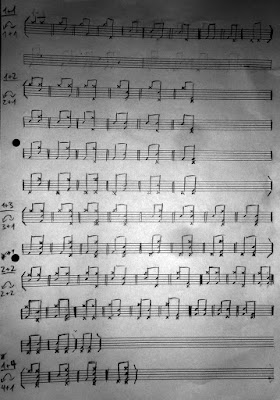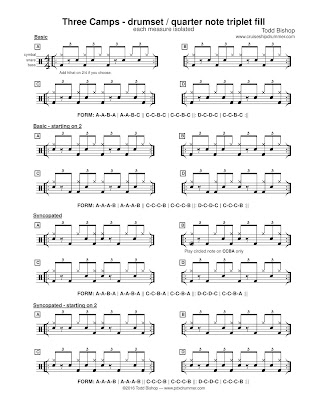I've long felt there isn't a truly good basic funk drumming book. There are many bad ones, and a few decent/acceptable ones. I most often use
A Funky Primer out of habit, or Joel Rothman's Mini Monster book. The
Roy Burns/Joey Farris book is solid. But I don't really have a universal method book for backbeat-based music that is ideal for most of my students.
So I was pleasantly surprised recently when I revisited
Jim Payne's Complete Funk Drumming Book, which I used a bit in school in the 80s, and realized
it's pretty good. It's 88 pages long. Like all of the above books, it's focused on playing funk time in 4/4— which today applies broadly to all areas of backbeat-oriented drumming. The progression in difficulty is well-paced, and it gives teachers a lot of options for using it with students of different levels of ability. Good for middle school to college level students.
It's nicely balanced— verbal explanations are straightforward and not over-long, and there aren't too many practice patterns— enough to teach a basic concept and its major variations, so the student can develop it further through his or her own playing.
It's music-centered, with the focus on informing your playing for real music. The more advanced materials are of normal complexity for real world playing and improvising. There are many transcribed examples of (now-classic) grooves, with metronome markings and complete citations for the songs and records they're from. Very important for the student, and very helpful for the teacher, and, with the destruction of the recorded music industry via pirating, streaming, and YouTube, it's easier than ever to actually listen to them and play along with them.
Most practice patterns and transcribed examples are one or two measures long. There are a few groups of single-beat technical studies. I use that type of thing with students quite often now— usually just to help get the coordination. Other teachers and students might be more into exploring their creative possibilities than I am.
There is a chapter on the connection of funk grooves to clave, and to Brazilian rhythms— not unlike some things I've done on this site. He presents these as ideas, with authentic rhythms, without getting into pseudo-hip made-up grooves, preparing you to do your own things with them.
The last half of the book, with the more advanced materials, is quite a bit looser in structure— I think it's probably more appropriate for mature students who are playing regularly, and have a good, creative relationship with a teacher. Students who can derive a lesson from something and run with it without having it spelled out or developed via many practice patterns.
It isn't until the very last pages of the book that we get into things that I wouldn't have a lot of use for; some technical patterns with a lot of three-way unisons, and some composed “hip” grooves. There's just five pages of that; and just because I don't dig it doesn't mean somebody else can't use it.
So, a very solid product. If my Syncopation-based funk methods provide the reading, textural, and improvisational training, this book provides the common real-world vocabulary and funk-theoretical background information I'll be using both with my students.







































